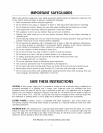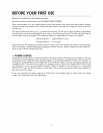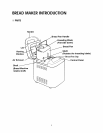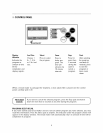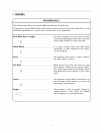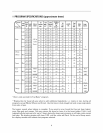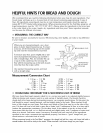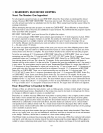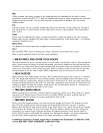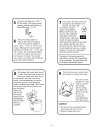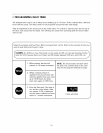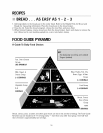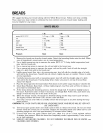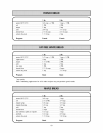
Manygrocerystoresstockgluteninthefloursection.Healthfoodandnutritioncentersalsocarrythisitem.
Flourisbestkeptin an airtightcontainer.If you arestoringtheflourfor a longperiodof time,you
maywantto keepit in thefreezerastherefrigeratortendsto dry it out.Wholegrainwheatflours,
whichhavea higheroil content,will becomerancidmuchmorequicklythanwhiteflour andshould
alwaysbe keptin thefreezer.Besure,however,to allowall floursto returnto roomtemperature
beforeplacingin thebreadmaker.
Fat: Dough Enhancer and Conditioner
Our recipes were developed using vegetable oil. You may use any type of oil or substitute in equal
proportions solid shortening or real butter (divide them into small pieces). We have found no
noticeable difference in flavor but the crust may be more crisp with real butter. We do not recom-
mend the use of margarine as it tends to make the crust tough.
Liquids: Activate the Yeast and Bind the Dough
When we use the term liquid, we are referring to all wet ingredients used in the recipe. For all
programs except fast bake, it is very important that the liquid temperature is 80°F/27°C. With this
water temperature, the yeast activates gradually to accommodate these programs.
When preparing bread using the fast bake program, all liquid temperatures must be 110 °-
115°F/43°-46°C. The warmer temperature is necessary for the yeast to activate quickly to
accommodate this specially designed program.
Eggs are also considered part of the total liquid amount. Eggs should be at room temperature.
When removing them from the refrigerator, place whole uncracked eggs in a bowl of warm water
for 15 minutes to take off the chill before use.
Cinnamon and Garlic: Not True Friends of Yeast
Previously, cinnamon and sugar were sprinkled on dough before it was rolled up jelly-roll fashion.
Adding cinnamon and garlic to the dough in a bread maker, however, presents a problem.
Cinnamon reacts with bread dough just as a meat tenderizer reacts with meat. It breaks down the
structure. Although it smells wonderful as it is baking, the flavor is dissipated in the baking process.
DO NOT ADD MORE THAN LISTED IN THE RECIPE. For more flavor, use them as a spread for the
bread rather than adding to the dough.
Fruits and Vegetables: Add Flavor and Nutrition
When adding fruits or vegetables to recipes, do not exceed the amount listed. These products, if
used in excessive amounts, may inhibit the rising of the bread.
Salt: Regulates Yeast Activity
Salt is necessary to control the activity of yeast, disciplining it to work slowly and steadily. Without
salt, yeast acts too rapidly. Salt also strengthens the structure of the dough. If too little or no salt is
used, the bread will rise rapidly and then fall. The texture will also be more coarse and/or uneven.
Sugar: Food for Yeast
Sugar is the favorite food of yeast, but too much sugar will cause the yeast to over-react. The loaf of
bread will be small and dense. Dried fruits also contribute sugar to the bread dough. We do not
recommend adding any more than is specified in each recipe. In addition, we do not recommend
the use of artificial sweeteners because the yeast cannot react with them.
SUBSTITUTES
In our test kitchen, we experimented with these ingredient substitutions. We do caution you that your
results may vary significantly from ours. If you would like to try other substitutions, there are several
helpful hint books available from retail stores to assist you. However, we cannot guarantee their results.
Eggs
Liquid egg substitutes may be used as directed on the carton.
Two egg whites may be substituted for one whole egg.
REMEMBER, all egg products must be at room temperature.
11



